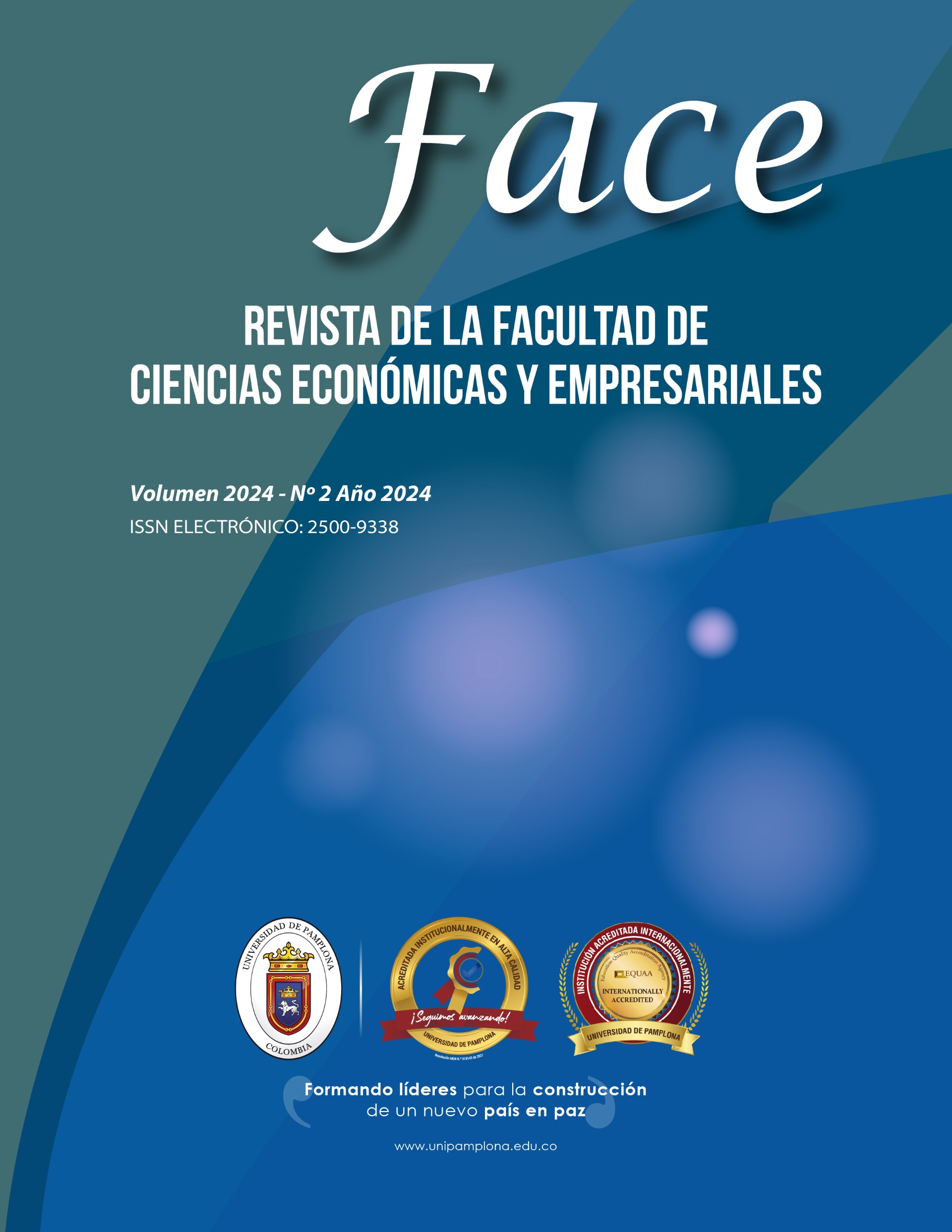Relación entre los elementos de los audiovisuales utilizados en las campañas publicitarias de medicamentos antigripales y su relación con el fomento de la automedicación en ciudadanos juarenses de 45 a 55 años
DOI:
https://doi.org/10.24054/face.v24i2.3115Palabras clave:
Automedicación, Publicidad, GripeResumen
La automedicación es una práctica muy común entre la población, como menciona Mora (2014) esta problemática se ha convertido en un hecho cotidiano sin distinción de clase social o carácter global, que ha aumentado aceleradamente en las últimas décadas, especialmente en enfermedades leves como la gripe. La gripe es una infección viral aguda dentro de las vías respiratorias que causa síntomas como la fiebre y algunos dolores musculares, esta enfermedad no es considerada de riesgo por lo que las farmacéuticas consideran su remedio como “medicamento de venta libre”, si bien, los medicamentos de venta libre deben de ser conseguidos en una farmacia o lugar medico establecido, al igual que los que necesitan alguna receta médica, existe un diferencial en la facilidad de poder adquirir uno antes que el otro, es por eso que a lo largo del tiempo los medicamentos de venta libre se convirtieron en un producto de los más vendidos a nivel mundial, por lo que su repercusión en el mercado es muy grande y se debe tomar en cuenta la importancia que tiene la publicidad en este ámbito (Campos, 2014). Se sabe que existen múltiples factores fuera de la publicidad como lo son el nivel socio económico, cuestiones culturales, tiempo, etc. que pueden orillar a la automedicación (Leonel et al., 2020), a pesar de eso, esta investigación se centrara en observar la relación entre los elementos publicitarios dentro de los spots audiovisuales de antigripales que inducen al ciudadano juarense a incidir en la automedicación para posteriormente recopilar datos y determinar si la publicidad es realmente un factor primordial que repercute en la automedicación en el ciudadano juarense o es otro de los anteriormente vistos.
Descargas
Referencias
Alcázar-Pichucho, M. T., Zambrano-Santos, R. O., & Pincay-Pin, V. E. (2018). Automedicación y los riesgos en la salud de la población adulta. Polo del Conocimiento, 3(8), 434-448. https://doi.org/10.23857/pc.v3i8.62
Campos, M. A. R. (2014). La industria de los medicamentos, el negocio que lucra con la enfermedad. Revista Enfermería La Vanguardia, 2(1), 98-113.
Cárdenas Mejía, L. G. (2006). El lenguaje, la persuasión y las pasiones. Estudios de Filosofía, 33, 87-98. Universidad de Antioquia, Medellín, Colombia.
Cornejo, E. F. (2017). Automedicación en estudiantes del Campus de la Universidad Católica de Córdoba (Doctoral dissertation, Universidad Católica de Córdoba).
Chion, M. (1998). La audiovisión. Ediciones Paidós.
Eguizábal Maza, R. (2007). De la publicidad como actividad de producción simbólica. En Nuevas tendencias en la publicidad del siglo XXI (pp. 13-34). Comunicación Social. ISBN 978-84-96082-51-9.
Erickson, B. F. (2010). La publicidad. Firmas Press.
Herrera, C. G. (2009). Persuasión: propaganda y publicidad. Contribuciones a las Ciencias Sociales.
Martínez Rodrigo, M. E., & Segura-García, R. (2013). El discurso emocional en la publicidad audiovisual de la DGT. Estudios sobre el Mensaje Periodístico, 19(abril), 863-872. https://doi.org/10.5209/rev_ESMP.2013.v19.42169
Machado, J. A. L., & México, E. (2018). Riesgos de la automedicación. Revista Vinculando.
Mora Gómez, E. (2014). Revisión y análisis bibliométrico de la investigación sobre automedicación desde el año 2000 (Doctoral dissertation, Universidad del Rosario).
Moya, M. (1999). Persuasión y cambio de actitudes. Psicología social. UNED.
Leonel, A., Papaqui, S., Castillo, F., Medina, J., Papaqui, J. P., & Sánchez, R. (2020). Principales causas de automedicación en estudiantes del área de la salud. Revista Conamed, 28(1), 3-9. ISSN-e 1405-6704.
Parra, C. O. (2018). La percepción en la publicidad vs. la percepción en la psicología. Colección Académica de Ciencias Sociales, 5(1). ISSN-e: 2422-0477.
Pérez, J. (2006). Automedicación, revisión bibliográfica. Universidad de Valladolid.
Perelló, S. M., & Bodas, S. V. (1999-2000). Lo verbal y lo no verbal en el mensaje publicitario televisivo. Contextos XVII-XVIII, 33-36, 223-241.
Salinas, P. J. (2009). La influenza o gripe porcina AH1N1: de la infección hasta el tratamiento. MedULA: Revista de la Facultad de Medicina, 18(1). ISSN-e 0798-3166.
Tobón, F., Gómez, M., & Salamanca, R. (2001). Responsabilidades en los actos farmacéuticos. Revista de la Facultad de Química Farmacéutica, 8(1 y 2). Universidad de Antioquia.
Thompson, I. (2005). Definición de publicidad. Promonegocios.net. https://www.promonegocios.net/mercadotecnia/publicidad-definicion-concepto.html
Descargas
Publicado
Número
Sección
Licencia
Derechos de autor 2024 FACE: Revista de la Facultad de Ciencias Económicas y Empresariales

Esta obra está bajo una licencia internacional Creative Commons Atribución-NoComercial-CompartirIgual 4.0.





